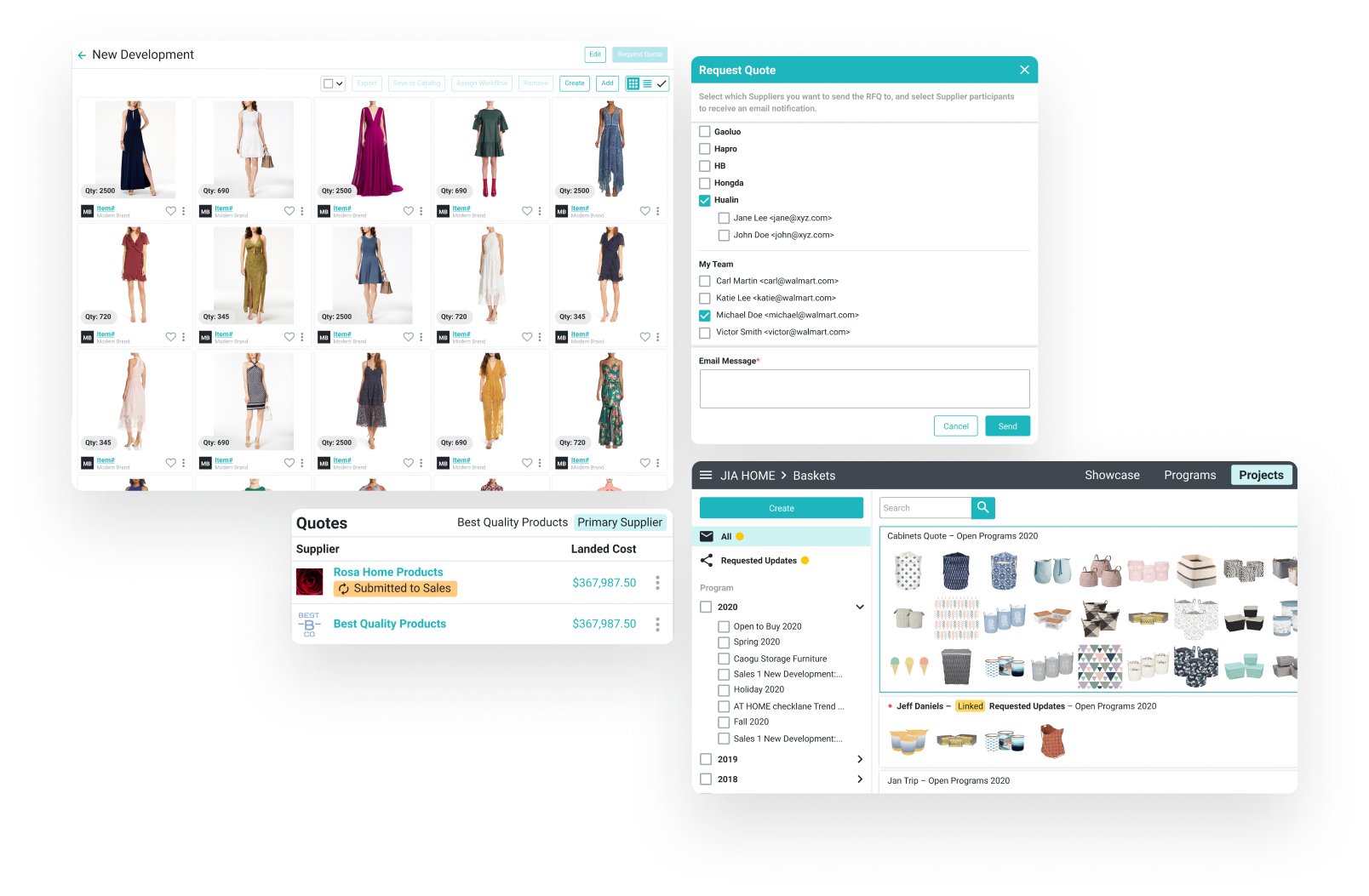Compare / Surefront vs Bamboo Rose
Surefront vs. Bamboo Rose PLM
PLM software makes it easier to communicate with your product development team. But how do you decide which software is best for your business?
Below, you can compare Surefront with Bamboo Rose PLM. You’ll see how these two platforms stack up when it comes to product development, project management, and more.
The Benefits of Bamboo Rose
Bamboo Rose is the rebranded version of a company and product called TradeStone, which was launched in 2003. It is one of the few PLM systems that can boast a supplier involvement component, meaning that customers of Bamboo Rose can interact with their suppliers to some degree within the platform. When it comes to Bamboo Rose specifically, this is mostly a benefit for retail or brand users, as they get to offload product data entry to their suppliers.
On top of the supplier interaction component, Bamboo Rose is one of the most robust PLM systems on the market as far as tracking, project management, customizability, and configurability go. That being said, the customizability and configurability is not something that's generally available out of the box. More on that in the next section.
The Shortcomings of Bamboo Rose
While Bamboo Rose does allow for supplier involvement, it's a fairly basic and less than useful feature. Here's why: The component is essentially a questionnaire that retailers or brands can configure within Bamboo Rose with the specific fields they need suppliers to populate for each product. The onus is then on each supplier to go into Bamboo Rose and set up their products, making sure all required fields are filled out to the specifications and data constraints that the retailer or brand has defined. That's where the retailer/brand/supplier collaboration within the tool begins...and ends.
Outside of product set-up, Bamboo Rose customers do the majority of their work outside of the Bamboo Rose platform - using email, Excel, PDF, and PowerPoint. This includes collaboration on and creative ideation about new products, the selection of new products, the back and forth communication on product details and pricing, etc. Only when the information about the product itself is relatively defined, and the product decisions have been made by the retail or brand customer, will the retailer or brand direct their supplier to enter product information and set up products in Bamboo Rose.
Usually, Bamboo Rose is white labeled for each of their customers and then divided into individual subnets. Ultimately this means that there is no supplier benefit. Suppliers need to have a separate login and account for each of their retailer and brands customers. If they are selling the same product to multiple retailers that all use Bamboo Rose, they still need to set that product up over and over and over again. It's basically a product entry form that leverages the manpower of suppliers to get product entry done.
That said, Bamboo Rose has recently added a marketplace style feature set. This allows suppliers to set themselves up in Bamboo Rose so that they can use the platform to connect with brands and retailers. As of yet, this is not a widely adopted feature set of Bamboo Rose.
Long story short, if you’re a supplier, and you want to minimize manual data entry, you probably would prefer your retail and brand customers use a different PLM solution.
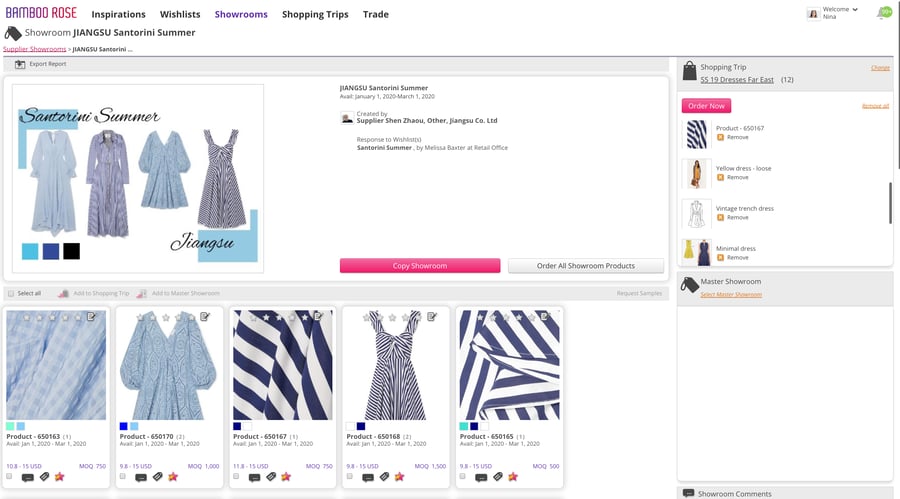
Bamboo Rose's user experience leaves something to be desired, with a grade of D+/C-. The information hierarchy design is poor. Data entry is difficult – essentially completed through individual data entry forms. The system also does not allow for product visualization capabilities. It looks like something that's 15 to 20 years old, because it basically is.
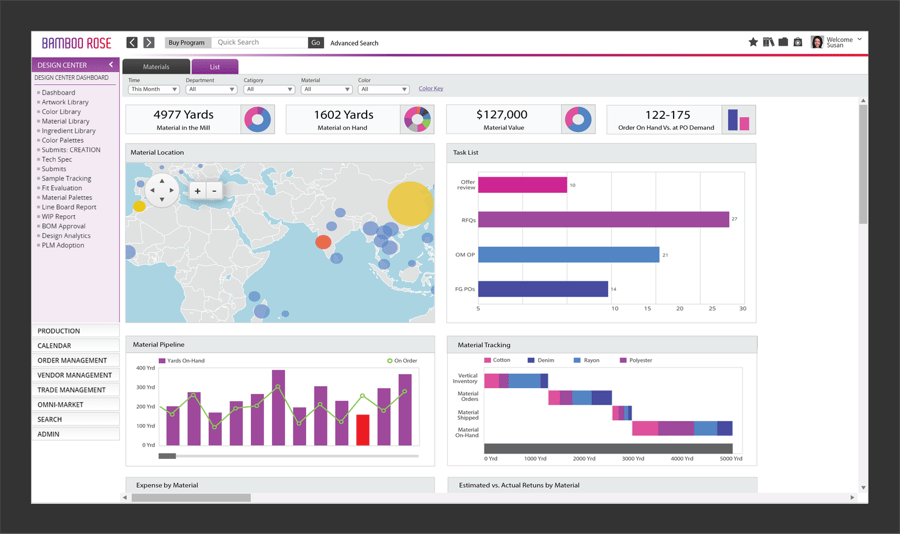
We mentioned the customizability and configurability of Bamboo Rose as one of their benefits, but take note that the customizability and configurability is not available out of the box. Most companies have to work with a third party partner, paying consulting and engineering hours, to customize and configure Bamboo Rose to its maximum degree.
Which takes us to pricing. Most mid-market companies will be looking at hundreds of thousands of dollars to onboard Bamboo Rose. Add to that the subscription cost itself, and the total is upwards of a quarter million dollars.
But, wait, there’s more! With Bamboo Rose, you'll still need to build an integration with your ERP system to use any of the product information housed in Bamboo Rose. And you'll still need to get a PIM. And you'll still need to find a solution for your B2B sales tools. Consider all of these costs as you make your PLM software decision.
You may be thinking, “I’m a small company, there must be an out of the box solution that I can use that doesn't require customization.” Well, no. And that's because it is just too difficult to use unless it is customized. And what's worse than undergoing an expensive and lengthy onboarding process? Undergoing an expensive and lengthy onboarding process and then no one actually adopting the software.
On top of the budget commitment, onboarding Bamboo Rose will take about a year, if not longer.
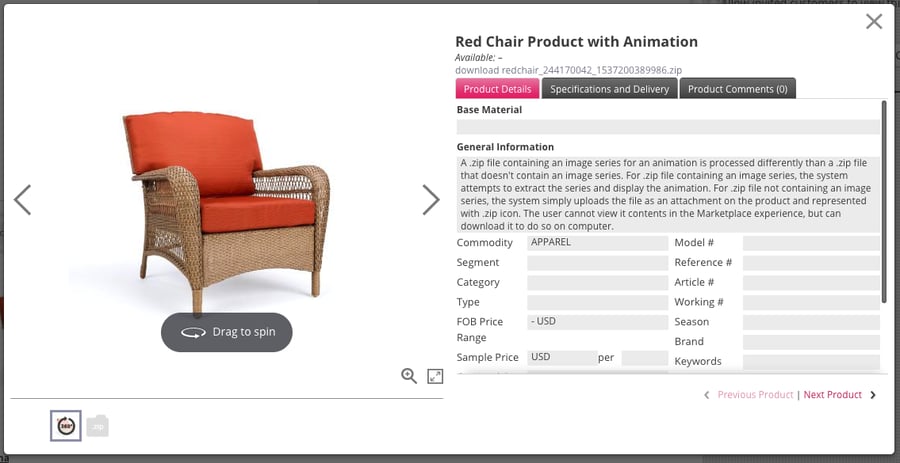
When To Choose Bamboo Rose
Within soft lines, Bamboo Rose is perhaps the most well established PLM player out there. They've been around for 20+ years. They've had deployments and engagements at Fortune 50 companies that bring in tens of billions of dollars in revenue. All that to say that they are well trusted.
So if you have a risk averse, conservative, multi billion dollar, soft lines organization that wants to go for experience and maturity of the product, Bamboo Rose might be for you.
If accuracy of data ingestion and executive stakeholder project tracking/management is most important to your organization, and you have the ability and appetite to spend significantly on a small slice of the overall product management lifecycle process, Bamboo Rose could be the right choice.
Just keep in mind, in choosing Bamboo Rose, you'll need to be okay with having several significant touchpoints in your product development cycle happening outside of Bamboo Rose.
When To Go With Surefront
If your company is bringing in less than $500 million in revenue, Bamboo Rose is likely too heavy of a solution to onboard, implement and customize for you.
More than that, if you are looking for a shared workspace that gives your internal and external teams (supplier partners, vendors and factories) a place to fully collaborate all the way from new product ideation through production so that you don't have to spend all of your time migrating data into and out of a PLM system, Surefront's your tool. This is important if you want to run an efficient, fully collaborative process without the risk of human error. It's also key to eliminating the lion's share of administrative tasks and savings tons of time for your team members. As a bonus, less busy work usually equates to happier team members, which translates into improved employee retention.
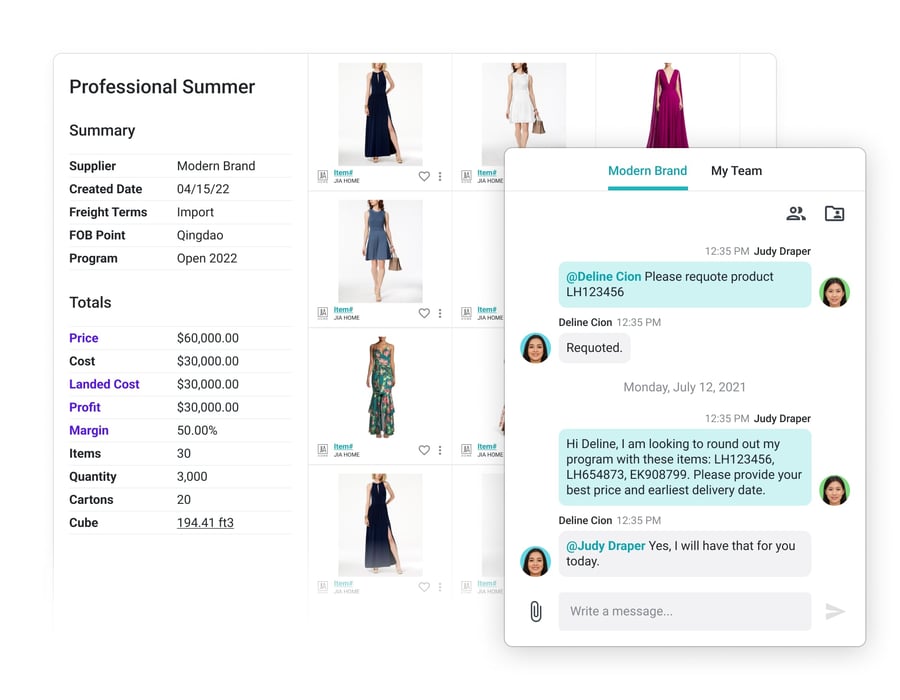
Beyond that, Surefront has a best in class product information management module that helps teams outside of product development and merchandising find and utilize the information that those two teams are creating and bringing to market in order to facilitate eCommerce sales, marketing, customer support and more.
Surefront's user experience is top notch as well, making it a great tool for any team made up of digital natives.
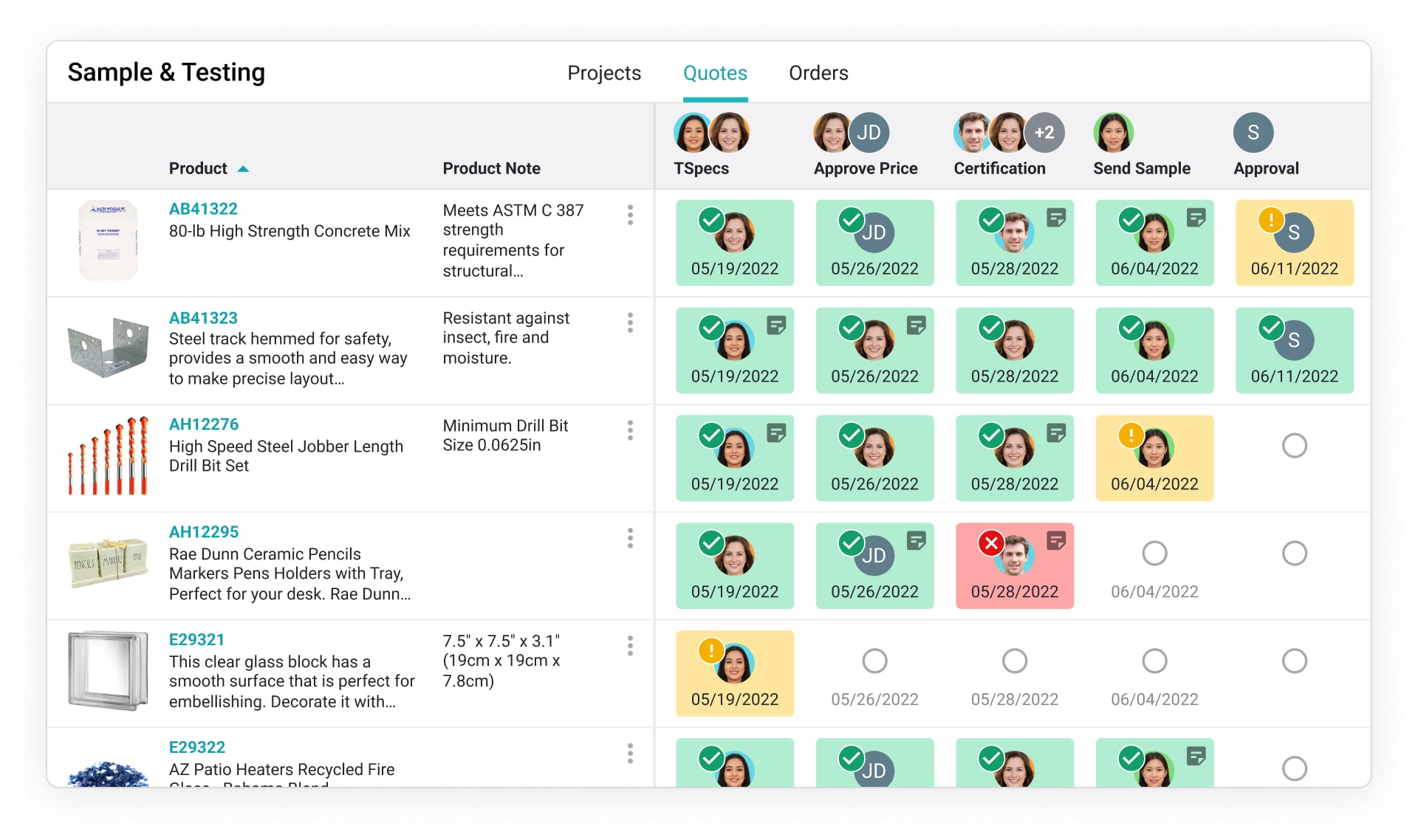
Feature Comparison: Surefront vs. Bamboo Rose PLM
Surefront offers several features Bamboo Rose doesn’t, including collaborative workspaces, contextual communication, visual search and sorting abilities. Here’s a complete list:
|

|
|
Product Database |
||
Custom Exports |
||
No-Code Product Data Model |
||
Custom Project Management Workflow |
||
Contextual Communication |
||
Vendor Collaborative Workspaces |
||
Free Vendor Access & Onboarding |
||
Consumer-Grade User Interface |
||
Integrations |
||
Visual Assortments |
||
< 3 Month Adoption Time |
||
U.S. Based |
